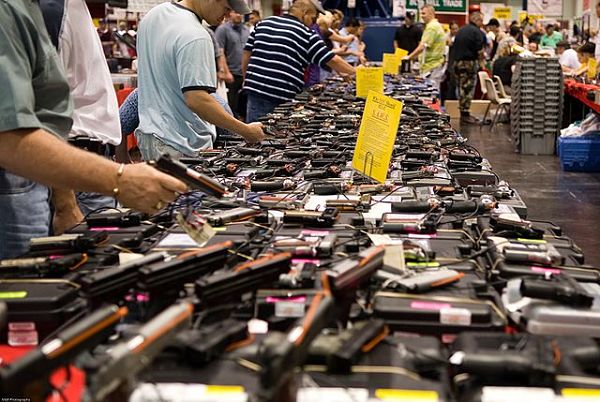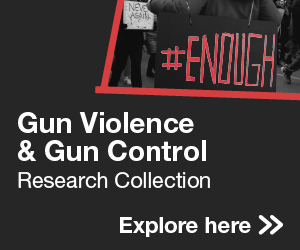 Announcements
Announcements Microsite Offers Collection of Latest Research on Guns and Violence
While the United States, with its never-ending tsunami of gun violence, famously saw the federal government stymie academic research by the Centers for Disease Control into areas that might “be used to advocate or promote gun control,” that didn’t mean no research on guns and the violence associated with them did not occur. (And it’s not solely an American problem: Guns kill more than 500 people — over 100 in the United States — each day,)
And while that specific U.S. impediment – known as the Dickey Amendment – was relaxed in 2018, the unique American reluctance to address even obvious aspects of the problem meant that much of the research had a particular orientation As sociologists Jennifer Carlson and Rina James noted on Social Science Space, “the federal agencies we studied, criminal justice approaches dominated funded research on gun violence. They treated gun harm as arising from intentional criminal acts, and they emphasized interventions that center criminal justice institutions such as criminalization, policing, and incarceration.”
Nonetheless, important research – with or without a criminal justice approach – has taken place, and SAGE Publishing, the parent of Social Science Space, has collected some of the best and most recent, into a curated microsite.
The microsite is intended as a hub for research published on gun violence, violent individuals, victims, gun regulation, and attitudes toward firearms across a wide variety of disciplines. The material, numbering dozens of journal articles, draws from SAGE’s extensive stable of academic journals spanning pertinent areas. One goal of this and other SAGE microsites is to examine the entire spectrum of research on an area of public interest – note, not in a specific discipline – to help researchers pursue knowledge outside their usual silos.
The collection covers the following specific areas: gun violence in schools; gun violence and mental health; hate crimes; victims and trauma; media responses, portrayals, and influences; myths and archetypes; commerce, legislation, and gun violence protection; attitudes on guns.
A look at some of the articles in the collection gives a taste of the breadth and value of the scholarship. In the journal World Affairs, Anthony Fleming, Dylan S. McLean, Raymond Tatalovich examine “Debating Gun Control in Canada and the United States: Divergent Policy Frames and Political Cultures,” while in Sociological Perspectives Jordan McMillan and Mary Bernstein detail “Beyond Gun Control: Mapping Gun Violence Prevention Logics.” From a more incident-based approach, Arun Frey and David S. Kirk explain “The Impact of Mass Shootings on Attitudes toward Gun Restrictions” in Socius: Sociological Research for a Dynamic World, while James Silver and Jason R. Silva offer “A Sequence Analysis of the Behaviors and Experiences of the Deadliest Public Mass Shooters” in the Journal of Interpersonal Violence.


















































































